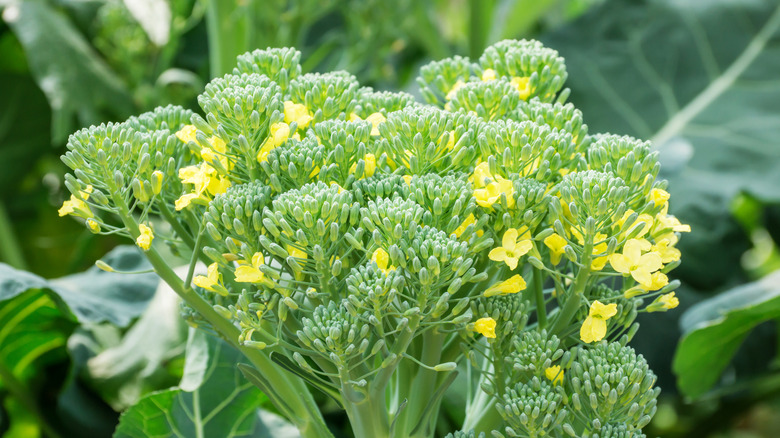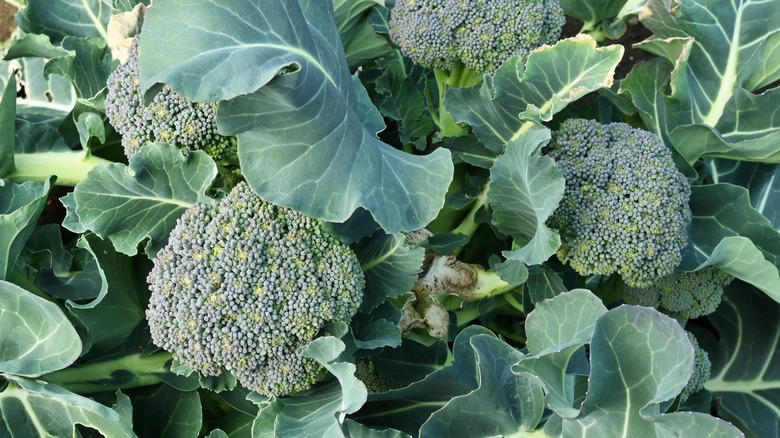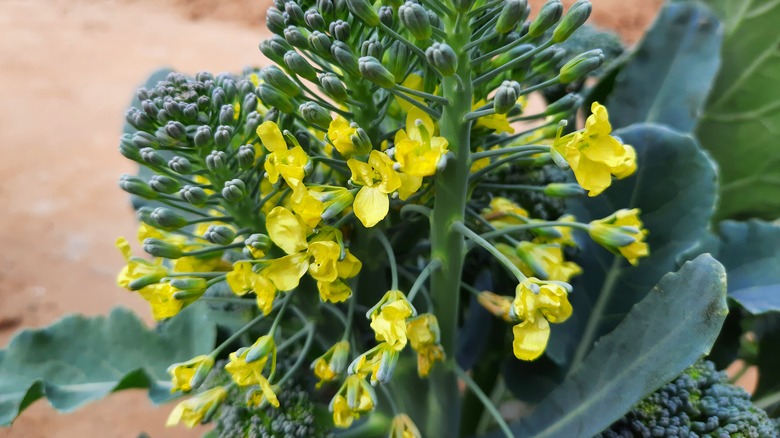Why The Broccoli In Your Garden Is Flowering (& What Happens If You Let It)
Broccoli is a delicious and nutritious crop that grows easily in home gardens during cool seasons. Unfortunately, if your broccoli is stressed by warm temperatures, insufficient water, or other unfavorable conditions, it can begin to flower and start setting seeds. While broccoli that has bolted generally doesn't taste good, the flowers are still a hit with pollinators and can even provide you with broccoli seeds for the next season.
It isn't dangerous to eat broccoli (Brassica oleracea) that has bolted, but it has an unpleasant flavor. This bitter taste is caused by the plant diverting its energy towards making flowers and setting seeds. Going to seed early in response to unfavorable conditions is a useful adaptation for plants as it allows them to pass on their genetics, but most gardeners don't appreciate their broccoli going to flower before they've had a chance to enjoy it. The best way to prevent this is by providing your broccoli with optimal growing conditions for as long as possible. You can also choose slow-bolt broccoli varieties like Calabrese, which may give you a slightly longer growing season.
How to prevent broccoli from flowering
One of the most common reasons broccoli bolts is because of excessively warm temperatures. Broccoli grows best at temperatures between 65 and 70 degrees Fahrenheit and may bolt when temperatures go above 75 degrees Fahrenheit. Depending on how quickly temperatures warm up in spring and cool down in autumn in your area, this could give you a very limited growing season for broccoli. Luckily, broccoli is relatively frost-hardy, and while it doesn't grow well in temperatures below 50 degrees Fahrenheit, it can survive in temperatures as low as 26 degrees. By carefully timing out when to plant your broccoli and choosing fast-growing cultivars like Packman or Cruiser, you should be able to have a successful broccoli harvest, even with a limited growing window.
Other stressors that can cause broccoli to bolt include over-fertilization and underwatering. Broccoli is a water-intensive crop that grows best if it receives 1 to 2 inches of water per week from rain or irrigation. Then, you should fertilize your broccoli when you plant it and regularly throughout the growing season. However, test your soil's nutrient levels to ensure you aren't over-fertilizing. You can even make a DIY soil test to check the health of your soil.
What to do with flowering broccoli
If your broccoli has bolted, you have a few options for what to do next. First, you can cut off the main head of the broccoli that is going to flower. Because broccoli grows back after cutting, you should see smaller heads on side shoots develop. Despite their smaller size, these broccoli heads are still delicious. This technique may allow you to extend your harvest slightly.
Another option if your broccoli bolts is to simply leave it alone and allow it to flower and go to seed. Bees and other pollinators like broccoli's yellow flowers, and the flowers may help draw these pollinators to your garden, which benefits all of your plants. After the seeds develop, you can wait for the seed pods to turn brown and then collect the seeds. Store the seeds you collect from your garden and plant them next season to give growing broccoli another try.


